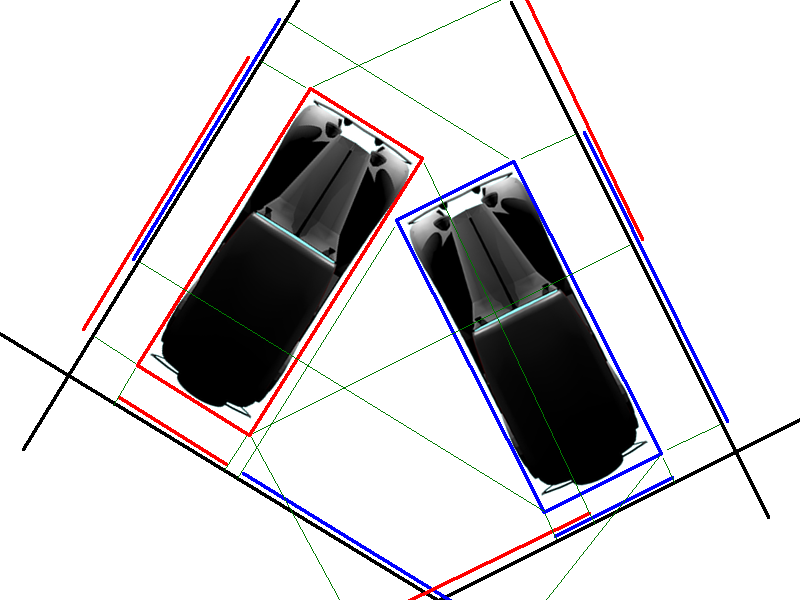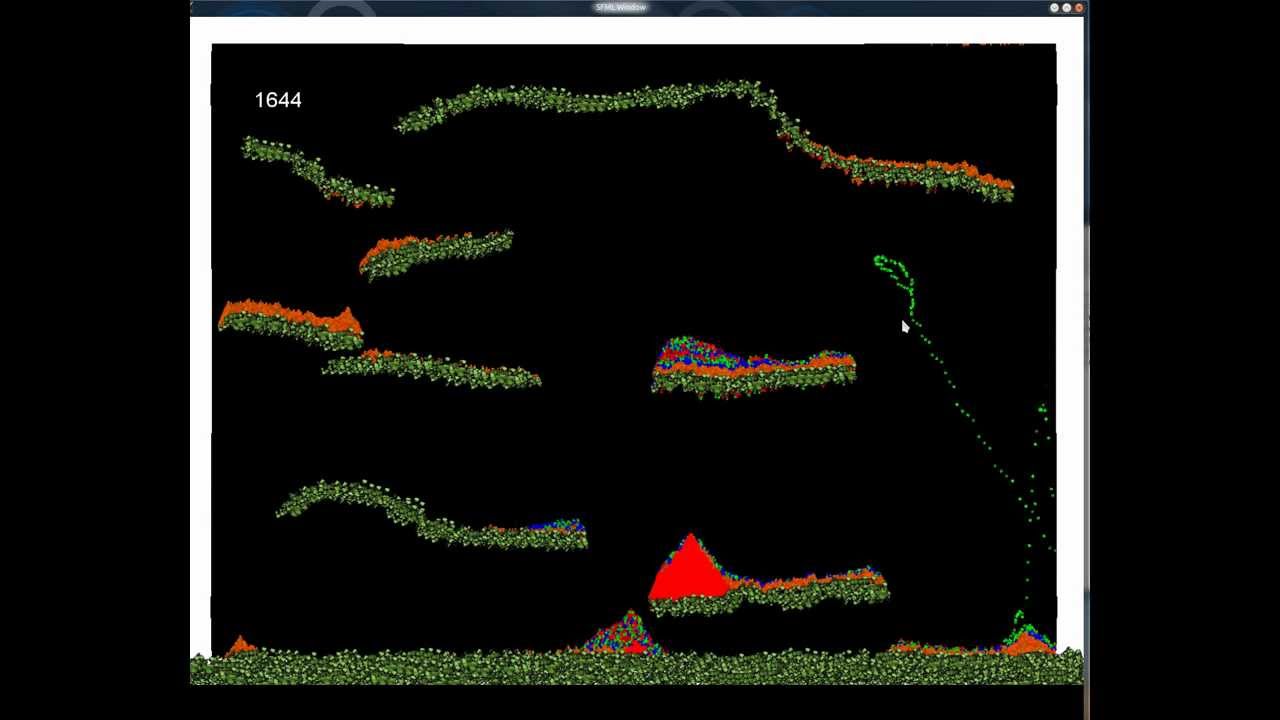# Lecture 11 - 2D Physics ### SET09121 - Games Engineering <br /><br /> Kevin Chalmers and Sam Serrels School of Computing. Edinburgh Napier University --- # Recommended Reading - Game Physics Engine Development, Millington. - If you ever want to build your own physics engine this is the book. - It does introduce some of the physics concepts well. - Unless you need to know this information it isn't necessary.  <!-- .element width="30%" --> --- # What do we mean by game physics? <iframe width="1400" height="800" src="https://www.youtube.com/embed/xh6bhBAO7vQ" frameborder="0" allow="accelerometer; autoplay; encrypted-media; gyroscope; picture-in-picture" allowfullscreen=""></iframe> --- # What do we mean by game physics? <iframe width="1400" height="800" src="https://www.youtube.com/embed/tugbGpRqiFY" frameborder="0" allow="accelerometer; autoplay; encrypted-media; gyroscope; picture-in-picture" allowfullscreen=""></iframe> --- # Game Physics - Showing a couple of examples is fine, but what is game physics and how do we use it? - Game physics is really only a small subset of academic physics -- it is not theoretical. - Game physics uses classical mechanics to provide the basic movement of objects in the game world. - We will look at the Laws of Motion for example. - Other physics models are used in some areas of games. - Fluid dynamics for example. - Most advanced rendering techniques rely on physics concepts. - Optics, etc. --- # Physics Engine - Game physics is almost always provided by a third-party engine. - It used to be that a game studio required someone with a masters of PhD in physics. - We will use Box2D as our middleware. - There are a number of industry used, free, physics engines out there.  <!-- .element width="30%" -->  <!-- .element width="30%" -->  <!-- .element width="30%" --> --- # Collision Detection - Collision detection is not strictly part of a physics engine. - The physics engine concerns itself with resolving collisions. - So we need to be able to detect them in the first place. - There are numerous techniques to detect collisions in 2D and 3D -- from fast course-grained to slow fine-grained.  <!-- .element width="50%" --> --- # Particle Simulation - Particle simulation forms the basis of many physics engines. - Particles are simply simulated elements that we can apply the Laws of Motion to. - The have a position, velocity, acceleration, etc. - Particles are use for numerous graphical effects. - For example, smoke, fire, explosions, water, etc. <!-- .element width="60%" --> --- # Rigid Body Dynamics - Rigid bodies is about how geometric objects move and interact. - Unlike particles, rigid bodies have a shape. This means that not only move in space but can also rotate. - The bodies are rigid as they do not change shape.  --- # Bringing them Together - Collision detection (intersection testing) lets us find our which bodies have come into contact. - Particle physics allow us to control the motion of objects without taking into account their size and shape. - Rigid body dynamics let us model how geometric objects interact. - Rigid body dynamics also let us determine what happens when two objects collide. - Collision resolution. - Box2D provides these core features (and a bit more) so we can do almost any type of 2D physical effect you can think of. --- # Example -- Collision Detection <iframe width="1400" height="800" src="https://www.youtube.com/embed/qTV3ZQgTnkg" frameborder="0" allow="accelerometer; autoplay; encrypted-media; gyroscope; picture-in-picture" allowfullscreen=""></iframe> --- # Example -- Particle Simulation <iframe width="1400" height="800" src="https://www.youtube.com/embed/YeNeod0qfPY" frameborder="0" allow="accelerometer; autoplay; encrypted-media; gyroscope; picture-in-picture" allowfullscreen=""></iframe> --- # Example -- Rigid Bodies <iframe width="1400" height="800" src="https://www.youtube.com/embed/LnvtZn2agmA" frameborder="0" allow="accelerometer; autoplay; encrypted-media; gyroscope; picture-in-picture" allowfullscreen=""></iframe> --- # Example -- Water Simulation <iframe width="1400" height="800" src="https://www.youtube.com/embed/zMTzWLGcPEk" frameborder="0" allow="accelerometer; autoplay; encrypted-media; gyroscope; picture-in-picture" allowfullscreen=""></iframe> --- # Example -- Cloth Simulation <iframe width="1400" height="800" src="https://www.youtube.com/embed/zt2P-yI5knY" frameborder="0" allow="accelerometer; autoplay; encrypted-media; gyroscope; picture-in-picture" allowfullscreen=""></iframe> --- ## Fundamentals -- Laws of Motion --- # What are the Laws of Motion? - Game physics are underpinned by Newton's three Laws of Motion. - First described by Isaac Newton in the 17th century. - Newton three laws are: 1. An object in motion stays in motion unless a force is applied to it. 2. A force applied to an object causes an acceleration in that direction multiplied by the inverse mass of the object. 3. For any action there is an but opposite reaction. - There are also Euler's two laws of rigid body motion which we won't discuss here. --- # Newton's First Law of Motion - An object in motion stays in motion unless a force is applied to it. - Basically, if there is no force there is no change in acceleration that can change velocity. - If $F_{net} = 0$ then there is no **change** in motion. - Where: - $F_{net}$ is the combined force applied to the object. - Opposite forces can cancel each other out. --- # Newton's Second Law of Motion - A force applied to an object causes an acceleration in that direction multiplied by the inverse mass of the object. - This is an important calculation, and normally underpins most of the force calculation work in a physics engine. `$$ F = ma $$` Where: $m$ is the mass, $a$ is the acceleration. Or: `$$a = \frac{F}{m}$$` --- # Newton's Third Law of Motion - For any action, there is an equal but opposite reaction. - The law comes into play when working with collision resolution. - A similar looking force is the normal force which cancels out the force of gravity on a resting object.  --- # Equations of Motion <div style="float: left;width: 40%;"> `$$ v = u + at $$`<br /> `$$ s = \frac{1}{2}(u + v)t $$`<br /> `$$ s = ut + \frac{1}{2}at^2 $$`<br /> `$$ s = vt - \frac{1}{2}at^2 $$`<br /> `$$ v^2 = u^2 + 2as $$`<br /> `$$ a = \frac{v - u}{t} $$`<br /> </div> <div style="float: right;width: 60%;text-align: left;"> \\\(s\\) : object displacement.<br /> \\\(u\\) : the initial velocity.<br /> \\\(v\\) : the final velocity.<br /> \\\(a\\) : the acceleration.<br /> \\\(t\\) : (or \\(\Delta t\\)) : the time passed. </div> --- # SUVAT  <!-- .element width="100%" --> --- # Simple Gravity - We will define some basic values and principles that are useful when considering motion. - The first value we shall define is gravity, $g$. - On Earth, $g$ is a downward force applied to an object. - $g$ at sea level is equal to $9.82m/s$. - As a 2D vector this is $<0, -9.82>$. - This value for $g$ is commonly low in a 2D game world (as pixels are do not represent metres) so you will probably want to increase it. --- # Weight and Mass - we use the terms weight and mass interchangeably in everyday language. - In physics, weight and mass are different. - Weight is the downward force applied to an object due to gravity and the object's mass. - Mass is the measure of how much matter is in an object. - We use $kg$ for mass. Less gravity means less weight, but the mass will remain the same. $w = mg$ Where: $w$ is weight, $m$ is mass, $g$ is gravity. --- # Forces - Weight is a force. A force is considered to be any influence that can affect the velocity of an object. - As we saw with $g$, a force is defined as a vector, having a direction and magnitude. - A Newton is a standard unit of force applied to an object. - Many physic engines will try and deal in Newtons to ensure calculations are uniform. $$1N = 1kg \times m/s^2$$ On Earth: $$g = 9.8 m/s^2$$ so: $$1N = 0.102kg $$ $$ 1kg = 9.8N $$ --- # Adding Forces - When applying forces, we are typically concerned with accumulated force for a particular frame. - Adding forces is just a case of adding the vector forces together and applying the resultant net force to the object.  --- # Force Examples - Springs are commonly used for a number of effects -- they do exactly what you think. - In games, springs are used for deformable shapes and balls. Hook's Law: $$F = -k\Delta l$$ where $k$ is the stiffness of the spring and $l$ the length. - Drag is another force that is caused by air resistance. - Games will use a simplified model of drag, such as shown. Simplified drag: $$F_{drag} = \hat{\textbf{v}}(k_1\lVert\textbf{v}\rVert + k_2\lVert\textbf{v}\rVert^2)$$ --- # Impulses - Forces are a simple way of managing object movement. - A force is applied to the object. - The force affects the object's acceleration. - The acceleration affects the velocity of the object. - Sometimes we want to modify velocity directly, for example in collision resolution. - The amount of force applied after collision may not be enough to move the object. - Therefore we use impulses to calculate direct changes in velocity. Impulses are Cheat forces. We implement them by directly modifying velocity. You can't do this in real life. --- # Impulses over Forces - The effect of a force is gradual, particularly in the time frames we are dealing with. - Force applied to an object. - Force divided by object's mass is added to object's acceleration. - Acceleration is then multiplied by time (typically a fraction of a second) and is added to the velocity of the object. - The new velocity, multiplied by time, is used to move the object. - Impulse forces are far more sudden. - Impulse is calculated. - Impulse divided by mass is added to the velocity. - Use the new velocity multiplied by time to move the object. --- # Impulse Example - Normally we would calculate a force as follows: $$ F_{net} \mathrel{{+}{=}} F $$ - For an impulse, the change is far more sudden, and we just add a value directly to the velocity. $$ p.v \mathrel{{+}{=}} I $$. - Particle uses new velocity at next update. --- # Summary Warning - Physics effects look good in your game, provide nicer looking movement, and can be used for gameplay. However... - Physics calculations can be expensive. - They also don't always scale well also due to the object interactions. - Collision detection is also expensive. - Be smart! Don't have lots of physical effects on the screen at one time -- this can really hit performance! --- # Summary - We have taken a very broad overview of what we mean by game physics. - Laws of Motion. - Particles. - Rigid bodies. - Collisions. - Box2D will provide us with all these features and more -- you just need to explore it. - The physics tutorial will introduce most of these ideas.